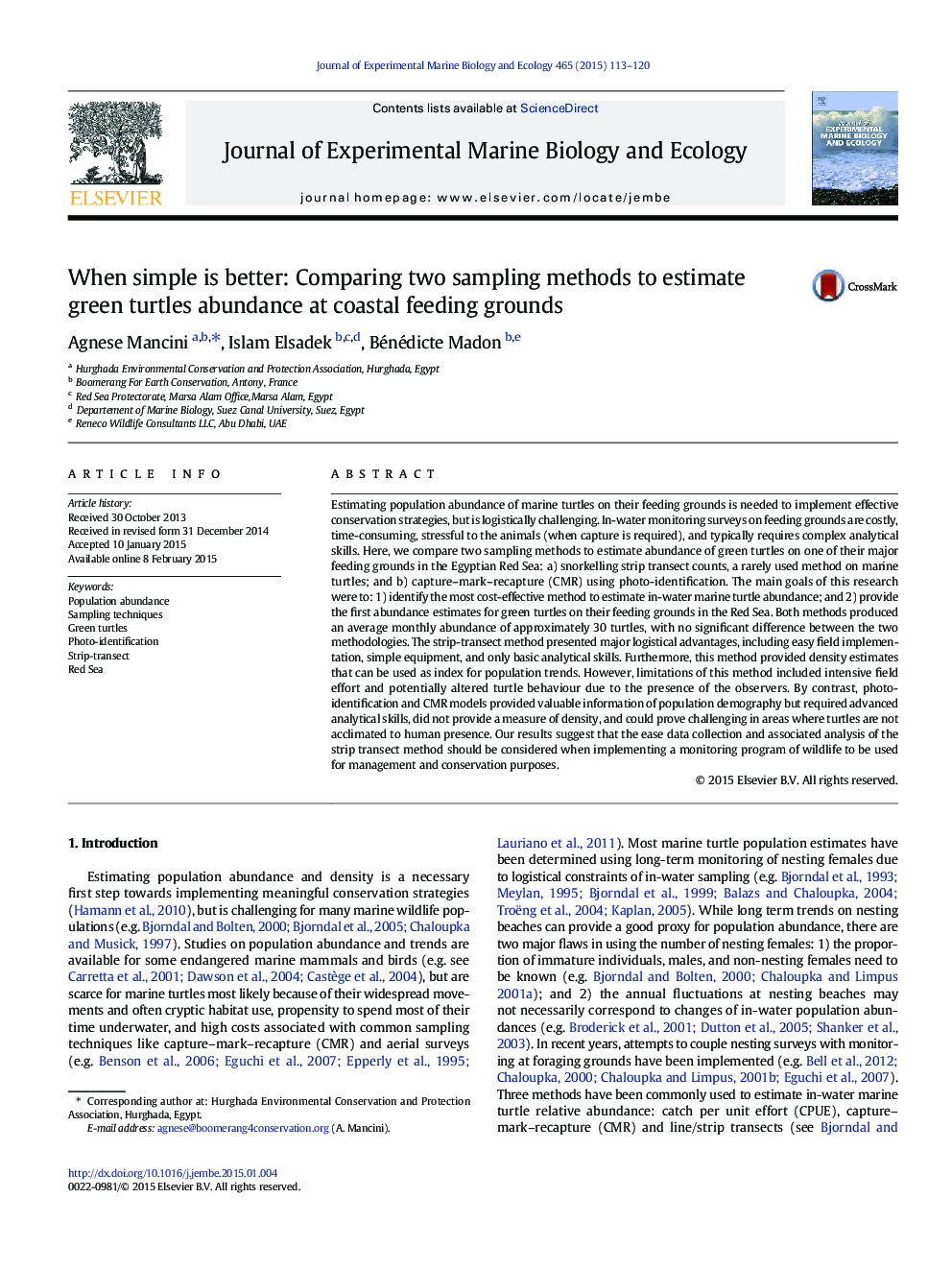| Article ID | Journal | Published Year | Pages | File Type |
|---|---|---|---|---|
| 4395518 | Journal of Experimental Marine Biology and Ecology | 2015 | 8 Pages |
•We compare two sampling methods to estimate in-water abundance of green turtles.•This is the first abundance estimate of green turtles in the Egyptian Red Sea.•Photo-identification is fitted into complex models and provides information on population structure.•Snorkelling transects are a simple but reliable monitoring technique.
Estimating population abundance of marine turtles on their feeding grounds is needed to implement effective conservation strategies, but is logistically challenging. In-water monitoring surveys on feeding grounds are costly, time-consuming, stressful to the animals (when capture is required), and typically requires complex analytical skills. Here, we compare two sampling methods to estimate abundance of green turtles on one of their major feeding grounds in the Egyptian Red Sea: a) snorkelling strip transect counts, a rarely used method on marine turtles; and b) capture–mark–recapture (CMR) using photo-identification. The main goals of this research were to: 1) identify the most cost-effective method to estimate in-water marine turtle abundance; and 2) provide the first abundance estimates for green turtles on their feeding grounds in the Red Sea. Both methods produced an average monthly abundance of approximately 30 turtles, with no significant difference between the two methodologies. The strip-transect method presented major logistical advantages, including easy field implementation, simple equipment, and only basic analytical skills. Furthermore, this method provided density estimates that can be used as index for population trends. However, limitations of this method included intensive field effort and potentially altered turtle behaviour due to the presence of the observers. By contrast, photo-identification and CMR models provided valuable information of population demography but required advanced analytical skills, did not provide a measure of density, and could prove challenging in areas where turtles are not acclimated to human presence. Our results suggest that the ease data collection and associated analysis of the strip transect method should be considered when implementing a monitoring program of wildlife to be used for management and conservation purposes.
